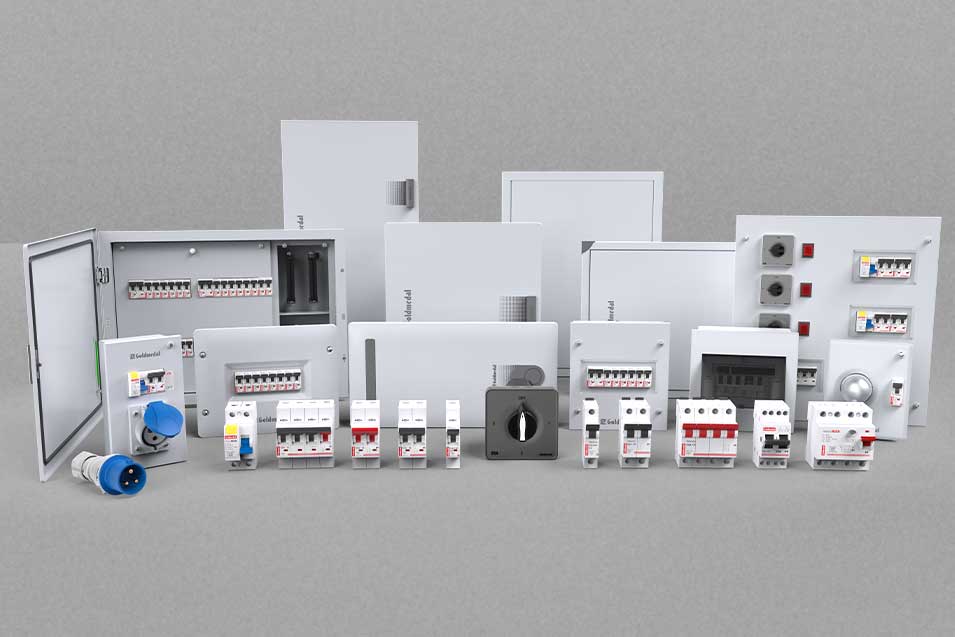
What is the surge protection device and its importance?
Surge protection devices (SPDs) are used to protect electronic equipment from voltage spikes or surges. They are an integral component of modern electrical systems and are also used to protect electronic equipment like televisions, washing machines, computers, and safety circuits. The primary function of an SPD is to limit transient over voltages and divert surge currents away from sensitive equipment, thus preventing damage or operational disruptions.
How do Surge Protection Devices function?
At its core, a surge protection device operates by monitoring the voltage in electrical circuits. In normal conditions, the SPD remains inactive, allowing the electrical current to flow unimpeded to the connected devices. However, when a voltage spike occurs, the SPD quickly reacts, either by blocking the surge or by redirecting it to the ground, away from the protected equipment. This action helps to maintain the voltage supply within safe levels, safeguarding electronic appliances and systems from potential harm.
Types of Surge Protection Devices
There are three types of SPDs:
- SPD installed at the origin i.e. main distribution board.
- SPD installed in consumer units like computers, LED lights, spike guards, extension boards, etc.
- SPD installed close to protection load as a supplement to the above SPD.
Importance of Surge Protection Devices
- Equipment Protection: The most obvious benefit of SPDs is the protection they offer to electronic equipment. Voltage surges can damage electronic components, leading to costly repairs or replacements. By installing SPDs, businesses and homeowners can avoid these expenses and extend the lifespan of their electronic devices.
- Operational Continuity: In many commercial and industrial settings, a single moment of downtime can translate into significant financial losses. Surge protection devices help ensure that critical systems remain operational, even in the face of electrical disturbances, thereby minimizing downtime and maintaining productivity.
- Safety Enhancement: Voltage surges not only pose a risk to electronic equipment but can also create fire hazards. By preventing overheating and potential sparks that can arise from electrical surges, SPDs contribute to a safer environment in both residential and commercial settings.
- Data Protection: For organizations that rely heavily on data storage and processing, SPDs are vital in protecting against data loss or corruption. Voltage spikes can disrupt data transmission and storage devices, leading to potential data integrity issues. Surge protection is, therefore, an essential aspect of data security strategies.
Surge protection devices are indispensable elements of contemporary electrical systems, providing essential defence against voltage surges that may lead to damage, loss of data, and risks to safety. Recognizing the role and significance of these surge protection devices enables both individuals and businesses to actively shield their electronic devices, thereby guaranteeing continuous operation and improving safety.
Frequently Asked Questions (FAQs) :
Q1. How do I choose the right surge protection device for my home?
To choose the right surge protection device for your home, consider the device’s surge protection rating to ensure it can handle common surges. Match it with the specific requirements of your home’s electrical system and the sensitivity of your electronic devices. Consulting with a professional electrician can also provide tailored advice based on your home’s unique needs.
Q2. Can surge protection devices be used outdoors?
Yes, surge protection devices can be used outdoors, provided they are specifically designed for outdoor use and have appropriate weatherproof ratings to withstand environmental elements. These specialized devices ensure electrical safety and protect outdoor appliances and systems from voltage spikes.
Q3. Do surge protection devices need to be replaced periodically?
Yes, surge protection devices should be replaced periodically. Their effectiveness can diminish after absorbing multiple power surges, and manufacturers often recommend replacement every few years or after a known significant surge event to ensure ongoing protection.
Q4. Can surge protection devices protect against lightning strikes?
Surge protection devices can provide a level of protection against the electrical surges caused by lightning strikes, but they cannot fully guarantee protection against a direct lightning strike, which can be immensely powerful and potentially bypass or overwhelm such devices.
Q5. Are power strips with surge protection the same as dedicated surge protectors?
Power strips with surge protection combine the functionality of a power strip with built-in surge protection, while dedicated surge protectors are solely designed to protect against voltage spikes without offering additional outlets. Though similar in surge protection, their primary functions differ.
Q6. Can surge protectors save energy?
Surge protectors primarily protect electronic devices from power spikes, but they don’t significantly save energy. However, by turning off the surge protector when devices are not in use, you can eliminate standby power consumption and thus save a small amount of energy.

